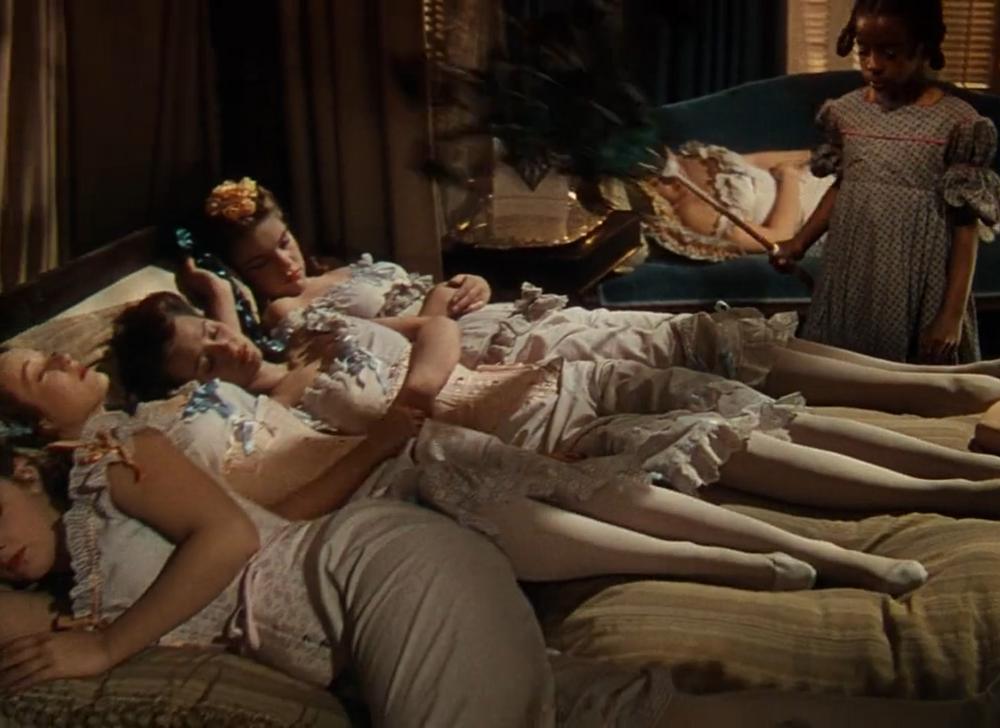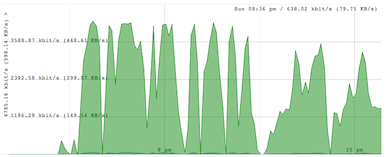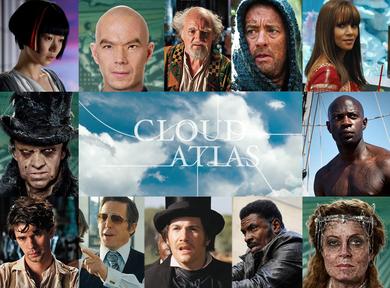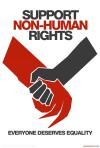|
(CW: rape, racism). Ken and I watched Gone With the Wind this week. As if it were prestige TV, in one hour segments over four nights. It’s imminently watchable that way. And for a movie as early as 1939 it still feels very modern. It’s completely enjoyable by modern standards, no early film awkwardness of plotting or direction. Well written characters, amazing sets and costumes, there’s a lot to enjoy in the film. It’s also a racist piece of shit of a film. And deeply steeped in rape culture. And these sins don’t just mar the surface; you can’t watch the movie and just sort of ignore them. The entire intent of the film is racist, the racism is woven throughout the whole story. It’s a Lost Cause fiction about a Gallant South, about how Georgia suffered unjustly under the evil invading Union forces. I was prepared for the racism part; the film is notorious for it. I was less prepared for the rape culture. The center of the film is the relationship between Scarlett O’Hara and Rhett Butler. It’s excellently written and both actors are amazing, so the performance is exhilirating. It’s also absolutely awful. The first time they kiss, it’s as they’re fleeing the burning of Atlanta and the destruction of Scarett’s world. Scarlett keeps saying "no" and pushing Rhett away, hitting him, pleading him to stop. And he literally forces a kiss on her against a blood red sky. To the film’s credit she holds her ground, pushes him away and slaps him, but Rhett doesn’t even look surprised. It gets worse with the actual rape on the staircase, a drunk Rhett violently attacking his wife, grabbing her and carrying her up the stairs. To impregnate her, after she’d already told him she didn’t want a second child and implied she wanted no sexual relations of any kind. The hideous thing is in the morning she’s shown waking as from a dream, with a smile, a happy smile, because apparently… I can’t explain it, it’s simply rape culture and it’s awful. Particularly for Scarlett. In many ways she’s a great character, a strong woman who survives no matter the circumstances, uses men and sexuality for her own purposes. To have her so violated and then shown to enjoy it is deeply offensive.  There’s nothing I can say about the racism in the film that’s not been said better elsewhere. Happy slaves, noble Klansman (barely disguised), the whole mythology of plantation life… it’s all awful propaganda. What I didn’t know before reading about the movie this week is how there were protests about the film both during its making and in its premiere in 1939. It was a hugely successful film but its hatefulness did not go unnoticed. Just most white Americans didn’t care. The Jim Crow South in particular was eager for a film that justified its continuing racism. I don’t know what to say about the stereotype character Mammy. When I was a little kid I had a nanny like Mammy, a big caring middle aged Black woman who loved children. So this Mammy stereotype is deeply wired into me. And Hattie McDaniel’s performance is excellent. I particularly like how much latitude she has in the household, how she can speak the truth and be sassy and be respected. OTOH Mammy is only written as a character to support the white people in the movie. Nothing at all is said about her own life, or what the transition of emancipation might have meant to her, or whether she had her own children or life outside of being Scarlett’s minder. None of the other Black characters get any better treatment, the film is entirely blind to the reality of life in that place. My mother loved Gone With the Wind. She loved the fantasy of the antebellum South, the costumes, the performances. She might have acknowledged the fantasy depiction of plantation life but would have found it unobjectionable. But I think what she really liked is Scarlett, a strong woman, a woman who survives very difficult times through grit and shrewdness and clever use of her feminine wiles. I don’t know what she would have thought about the rape culture, I think she bought into it as much as most people her age. That it was romantic for a man to ravish a woman. What an awful thing. Next up: Giant. The 1983 movie Brainstorm is worth seeing, or maybe revisiting if you last saw it decades ago. It fits in with Tron, WarGames, and Videodrome as early 80s imaginings of what the near-future of technology will look like. Great performances by Christopher Walken and Louise Fletcher.  The reason to watch Brainstorm now is is the production design, the imagination of consumer products and user interfaces for the near future. It feels like totally relevant, modern commentary on product design for things like the iPhone, Google Glass, Tesla, or a Microsoft Kinect. Dialed up to 11 with a sci-fi flight of fancy, of course, but well done for that. I’ll be honest and say the plot is sort of silly, a combination of military-industrial complex paranoia and some fairly hokey spiritualism. That’s partly redeemed by Louise Fletcher’s role as the head of the research project, a totally badass lady scientist. But mostly watch it for the animation sequences and the industrial design. I settled down a few days ago for an old classic film, Chinatown. Great Jack Nicholson performance, fantastic film noire homage, lovely 1940s period LA. And through the whole film I kept thinking two things. The game LA Noire owes a huge debt to Chinatown. And good lord, but is that film a serious product of rape culture. The obvious: a central plot point is that the female lead (an excellent Faye Dunaway) was raped by her father. That fact is presented sympathetically enough and she’s a little more complex than just a victim. But how do we learn it? Our hero detective literally beats it out of her. It’s a horrifying scene, played to deliver the shocking reveal. But then it’s also this disgusting revictimization. And it passes on without notice, of course the hard-boiled detective had to beat the hysterical girl silly. There’s another upsetting thing earlier, when our detective and the heroine first meet, where she seduces him. Two days after her husband’s violent death, a death the detective is implicated in. It’s not quite so stupid; we learn later she’s playing him, the seduction is strategically deliberate on her part. But of course the hard-boiled detective gets to bed the beautiful girl. And then there’s the central unspoken problem, that the director is Roman Polanski. Not three years after Chinatown, Polanski drugged a 13 year old girl and raped her. And pled guilty, and fled the US before sentencing, and has been an active fugitive ever since. I’m normally OK with separating the art from the artists, but in his case it’s just too much. But of course the famous director gets away with raping a child. Part of what’s so troubling about rape culture is how insidious it is. This kind of victimization of women was mainstream entertainment, without comment, for far too long. It’s an infection.
The Awl has threatened us with
news
of a Liquid Sky sequel.
The original film is
one of my favorites,
just check out the fashion show scene.
I can't imagine a sequel being a good idea but it is a good excuse for me
to share these animated GIFs.
  I like paying for digital movies. So I rented The Hobbit last night to watch on my Xbox. The movie was OK. The twelve times the streaming failed and the movie paused while it buffered was not. Amazon’s movie was about 3.5 gigabytes for 170 minutes, or 2700kbit/s. My download speed is a reliable 6000kbit/s. So what’s the problem?  The bandwidth graph above shows the problem; something terribly wrong with the streaming. First, the Xbox client doesn’t seem to buffer much, if at all. Playback would be a lot better if they used all 6000kbit/s and cached to disk. Second, their streaming server seems to have lost the connection ten times in three hours. Naturally they blame my ISP. At least they refunded the rental fee. I like to pay for media, but maybe next time I’ll consider downloading an unlicensed copy. Pirate Bay offers a 2000kbit/s version that I could have downloaded and then watched uninterrupted for free. It was available two weeks before the official release. I love the idea that the JJ Abrams films are not really Star Trek; they’re really Star Trek fanfic. I don’t remember where I first read that idea, but it’s exactly right. I liked both movies, don’t get me wrong, but they are just ridiculous. Here’s the first movie script: Kirk is this awesome 13 year old kid and he has a hot car and then he drives it off a cliff but he jumps out just in time. And then he gets in a fight in a bar and then he joins Starfleet and sneaks on board the Enterprise. And then Sulu has to space jump and he pulls out this sword and he’s, like, a killer ninja. And there’s a time traveling Romulan with special magical Red Matter. And Vulcan blows up but actually it’s a parallel Star Trek universe where all the same stories happen only totally different. And Spock and Uhura, they kiss. Totally rad story, right? The new movie is just as ridiculous, if somewhat clever in what it does. I enjoyed it. Here’s hoping Abrams gives the same tawdry treatment to the Star Wars films, that’s a franchise ripe for self-parody. The new Wachowski/Tykwer film Cloud Atlas is a hell of a good movie. If you’re at all curious about it, go see it in a real theater. It’s a terrific example of what film can be. Sprawling, uncompromising, beautiful.  It’s also one of those rare films that’s better than the book. I read the novel last month in preparation and while I enjoyed it, I found it a bit flat and hard to get through. The film picks up on all the interesting themes of the story and tells it more effectively. My only fear is it might be a bit hard to follow the movie; a plot synopsis of the story may help you enjoy the movie more and won’t spoil too much. I particularly like how they re-imagined the book as a movie, changing the narrative structure. The book is a series of 6 nested stories told in halves, ABCDEFEDCBA. The film chops that up and interleaves the stories much more rapidly. That lets them systematically highlight the common themes and narratives between each story that makes the whole work so intriguing. They also play off the stylistic inconsistency of each story, the mix of action, sci-fi, and farce coming fast and furious gives the narrative some much needed variety. Add on top of that great filmmaking, casting (Jim Broadbent!), makeup, production design, and it’s a rare example of a complete movie coming together. I’m also impressed at how the Wachowskis have stayed true to their vision of the filmmaker’s art. After the relative failures of the Matrix sequels and the underappreciated Speed Racer, you could imagine them compromising, retrenching. But there’s nothing tentative about Cloud Atlas, it’s an aggressive film. The collaboration with Tykwer also seems to have worked to everyone’s benefit. Interested in stories about motivated artists and craftsmen who toil for years on their own hoping for commercial success? Indie Game: The Movie is for you. I just watched it and it’s absolutely fantastic. Way better documentary filmmaking than the usual independent movie. And the film elevates the story; it’s not just about a few nerds making hipster games, it’s an intimate look into the lives of some very driven and talented people. It helps that the filmmakers picked three amazing independent games to cover. Super Meat Boy, Fez, and Braid are all great examples of indie games that benefit from a unique artistic perspective while also being fun to play. I really enjoyed the inside view of what it felt like to work for years on something so personal, the crises of faith, the joy of success. The film rests a little too heavy on the tortured artist narrative, but it was a great reminder to me of the cost of success. You can buy the movie for a very reasonable $10 from iTunes, Steam, or a direct DRM free purchase (1080p). The video quality is excellent.  Children of
Men was a huge breath of fresh air to scifi films. Tight movie, shot intelligently, interesting cinematography and
storytelling. District 9 isn't
quite as solid or well polished, but it's a thoughtful and
entertaining film. Worth seeing in a theater as an antidote
to all the garbage American action flicks.
Children of
Men was a huge breath of fresh air to scifi films. Tight movie, shot intelligently, interesting cinematography and
storytelling. District 9 isn't
quite as solid or well polished, but it's a thoughtful and
entertaining film. Worth seeing in a theater as an antidote
to all the garbage American action flicks.
Both films are grimly depressing. But they're not simplistic dystopian future films where the horrible world is comfortably distant from today. The world in these films is terrible now, today, for identifiable reasons. It's a very pessimistic reflection on our current society. It works quite transparently in District 9's case, drawing directly on apartheid experience to tell the story of what would happen if indigent aliens came to Johannesberg and squatted there in shantytowns. Basically the director is expanding on his short film Alive in Joburg, taking good advantage of his $30 million budget and less good advantage of a 112 minute running length. District 9 is strongest at the start setting up the world. Excellent use of documentary-style filmmaking and lots of shaky-cam to reveal classic unthinking xenophobia of various stripes. The movie then goes on to more of a classic action flick with slightly irritating Enemy Mine moralistic overtones. It works pretty well though, doubly so because Neill Blomkamp applies his CG background to some really great mech-suit and giant spaceship scenes. If District 9 is a success we can no doubt look forward to District 10, a Roland Mmmerech / Michael Bay $200M production. The explosions will be bigger, the action sequences will be edited to a frame of their lives, and the soul will be completely gone. In the meantime maybe they'll be making good scifi films somewhere outside the US studio system. We had a pretty good experience on Thursday seeing Julie & Julia. Great film. The balcony seats were comfortable, the projection and sound were good, and the audience was polite. That last point is important; I seldom go out to movies because I hate the rude audiences but a movie about Julia Child at a theater that's $2 more / ticket than normal is a bit self selecting. Also the theater didn't show any ads, too many previews, or offensive threats to put the audience in jail. A welcome change. The real novelty of the place is decent food and drinks in the movie. That was a mixed bag. The menu sure beats jujubes and popcorn, but it's not a proper dinner. And the alcohol service is limited to an awkward, crowded upstairs bar, a few small theaters, and balcony seating in the main theater. But the balcony worked out quite well, it was very nice to enjoy a martini and some fresh potato chips from our front row balcony. I can recommend Dosa across the street for a late dinner afterwards to make a full date. I sure wish San Francisco had something like Portland's brewpub theaters. I have many happy memories of beer and pizza watching second-runs and old flicks at the Bagdad. Great place to watch Repo Man. |
||
